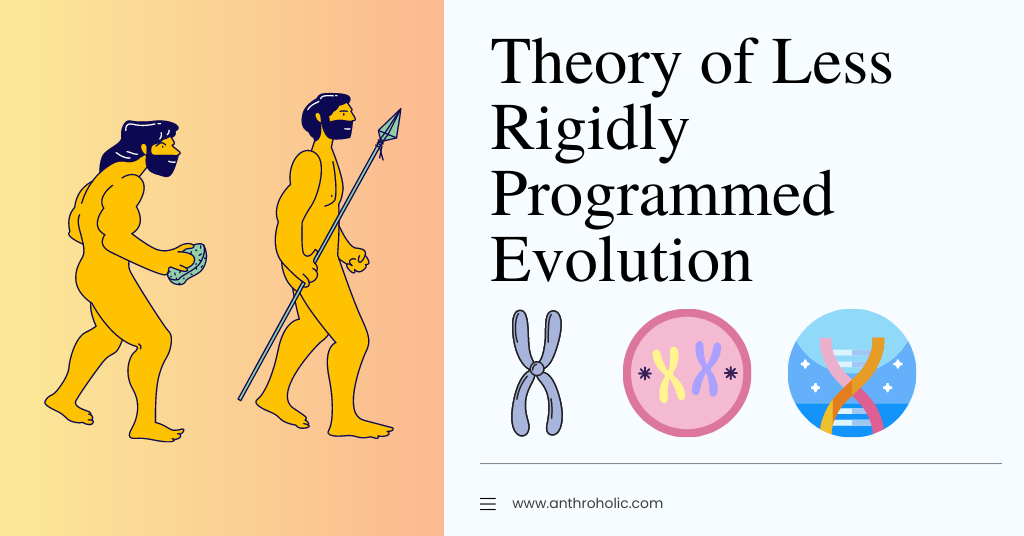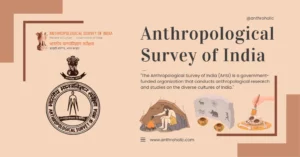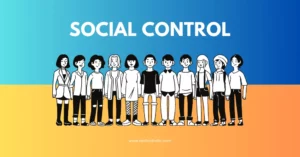AI Answer Evaluation Platform Live Now. Try Free Answer Evaluation Now
Theory of Less Rigidly Programmed Evolution
The theory of less rigidly programmed evolution is an intriguing concept that challenges traditional perspectives on the evolution of life on Earth.

Understanding the Traditional Evolutionary Model
Before we examine the less rigidly programmed evolution, it is crucial to understand the traditional model. Charles Darwin, often referred to as the “father of evolution,” introduced the concept of natural selection, suggesting that evolution is a slow and gradual process [1].
- Natural Selection: It postulates that species adapt over time to their environment, resulting in an increase in survival rates and reproduction.
- Mutation: These are random changes in the organism’s genetic structure, which occasionally result in beneficial traits. Over time, these traits become more prevalent, promoting survival and reproduction.
Darwin’s model implies a certain rigidity, with natural selection acting as a harsh filter, permitting only the fittest to survive [2]. However, the theory of less rigidly programmed evolution posits an alternative perspective.
Introducing the Theory of Less Rigidly Programmed Evolution
The theory of less rigidly programmed evolution posits that evolution is not entirely rigid and random, as Darwin’s model suggests, but is flexible and has elements of adaptability and foresight [3]. In other words, organisms may have some agency in their evolutionary course.
- Directed Mutation: According to this theory, organisms can, to some degree, influence the mutations that occur within their genetic structure [4]. Rather than random changes, these mutations can be directed towards enhancing survival and reproduction.
- Epigenetics: Epigenetics further supports this theory. Changes in gene expression, not coding, can be heritable and play a role in evolution. This allows for adaptability without altering the DNA sequence [5].
- Transgenerational Plasticity: The theory also introduces the concept of transgenerational plasticity, where parental experiences influence the traits of offspring, aiding adaptability [6].
| Traditional Evolutionary Model | Less Rigidly Programmed Evolution |
|---|---|
| Random mutations | Directed mutations |
| No role for Epigenetics | Emphasizes Epigenetics |
| No concept of transgenerational plasticity | Incorporates transgenerational plasticity |
Implications of Less Rigidly Programmed Evolution
The theory of less rigidly programmed evolution brings significant implications:
- Enhanced Understanding of Evolution: This theory provides a more nuanced and complex understanding of the evolutionary process, incorporating elements of adaptability and foresight.
- Influence on Genetic Research: It might help in improving our methods of conducting genetic research, focusing on not just the DNA sequences but also gene expressions and other epigenetic factors.
- Environmental Impact: It suggests that organisms might have the capacity to adapt more rapidly to environmental changes, presenting potential solutions to biodiversity loss due to climate change.
Criticisms and Counterarguments
Despite its merits, the theory of less rigidly programmed evolution is not without its critics. They argue that:
- There is insufficient empirical evidence to support the existence of directed mutations [7].
- The role of epigenetics and transgenerational plasticity in evolution is still under scrutiny and requires further research [8].
However, proponents counter that this is a relatively new field and that emerging research is promising, supporting the theory’s propositions [9].
Conclusion
In conclusion, the theory of less rigidly programmed evolution is a provocative idea that challenges the rigidity and randomness associated with the traditional Darwinian model. As research progresses, we may find that our understanding of evolution becomes less rigid and more adaptable, providing a more holistic understanding of life’s diversity on Earth.
References
[1] Darwin, C. (1859). On the Origin of Species. London: John Murray.
[2] Mayr, E. (2001). What Evolution Is. New York: Basic Books.
[3] West-Eberhard, M. J. (2003). Developmental Plasticity and Evolution. Oxford: Oxford University Press.
[4] Cairns, J., Overbaugh, J., & Miller, S. (1988). The origin of mutants. Nature, 335(6186), 142–145.
[5] Jablonka, E., & Lamb, M. J. (2005). Evolution in Four Dimensions: Genetic, Epigenetic, Behavioral, and Symbolic Variation in the History of Life. Cambridge, MA: MIT Press.
[6] Uller, T., English, S., & Pen, I. (2015). When is incomplete epigenetic resetting in germ cells favoured by natural selection? Proceedings of the Royal Society B: Biological Sciences, 282(1811), 20150682. https://doi.org/10.1098%2Frspb.2015.0682
[7] Lenski, R. E., & Mittler, J. E. (1993). The directed mutation controversy and neo-Darwinism. Science, 259(5096), 188–194.
[8] Skinner, M. K. (2015). Environmental Epigenetics and a Unified Theory of the Molecular Aspects of Evolution: A Neo-Lamarckian Concept that Facilitates Neo-Darwinian Evolution. Genome Biology and Evolution, 7(5), 1296–1302.
[9] Badyaev, A. V., & Uller, T. (2009). Parental effects in ecology and evolution: mechanisms, processes and implications. Philosophical Transactions of the Royal Society B: Biological Sciences, 364(1520), 1169–1177.



